Here we are in the third entry of my designer diary series. Today, let’s cover the evolution of the game’s prototype and the changes made from public feedback about my early design choices.
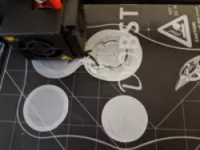 If you have been following along, by now you are likely familiar with the “clever” and some might say, insane, choices I made with the earliest prototypes to try to realize my vision for the game. The cheap foldable standees I made were at least a step closer to the presentation I wanted for the game, but now it was time for actual miniatures.
If you have been following along, by now you are likely familiar with the “clever” and some might say, insane, choices I made with the earliest prototypes to try to realize my vision for the game. The cheap foldable standees I made were at least a step closer to the presentation I wanted for the game, but now it was time for actual miniatures.
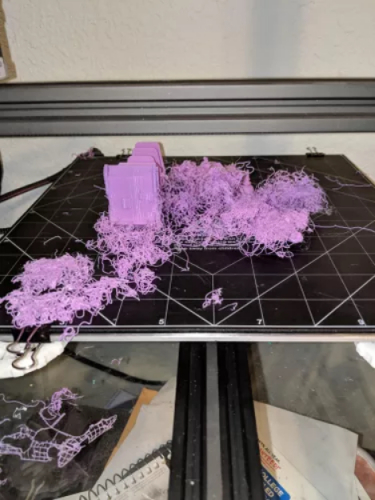 What did I know about that? Not much, but a little. I was used to working in 3d modeling for my day job and had been a hobbyist for many years in 3DS Max creating primarily mechanical designs. However, I needed organic stuff for many of the figures. I had never had success at that even when I had tried my hand at Zbrush and Mudbox so many years ago. But it was still too early to try to hire someone for this. I wasn’t even sure if the idea would ever be a reality, and it had changed drastically a few times already, so why have custom sculpts? I guessed it was up to me… again.
What did I know about that? Not much, but a little. I was used to working in 3d modeling for my day job and had been a hobbyist for many years in 3DS Max creating primarily mechanical designs. However, I needed organic stuff for many of the figures. I had never had success at that even when I had tried my hand at Zbrush and Mudbox so many years ago. But it was still too early to try to hire someone for this. I wasn’t even sure if the idea would ever be a reality, and it had changed drastically a few times already, so why have custom sculpts? I guessed it was up to me… again.
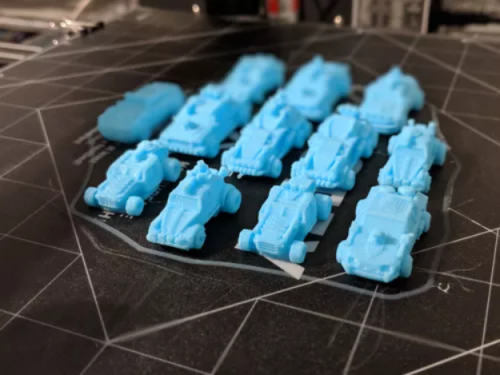 I was at least a little knowledgeable about the world of 3d printing because I am a techie at heart and knew that it was starting to become a bit more affordable for hobbyists. A close friend of mine took the plunge, bought an FDM 3D printer, and started doing small side projects. He gave me a pretty good review of his model, so I started researching other competitive models to get my bearings. Luckily, his exact model ended up having a pretty good deal pop up, so I decided to forego my research and just go with it. If it worked for him, it was good enough for me! I placed an order for it in April 2018.
I was at least a little knowledgeable about the world of 3d printing because I am a techie at heart and knew that it was starting to become a bit more affordable for hobbyists. A close friend of mine took the plunge, bought an FDM 3D printer, and started doing small side projects. He gave me a pretty good review of his model, so I started researching other competitive models to get my bearings. Luckily, his exact model ended up having a pretty good deal pop up, so I decided to forego my research and just go with it. If it worked for him, it was good enough for me! I placed an order for it in April 2018.
Next thing I knew, poof, it arrived! I set it up (not easy, but not hard either) and then just stared at it thinking…what now? Then came the time to learn the software and print some existing stuff from the internet or the demo files that came with it. I was unaware of the file formats it required at the time (and had no idea how to make anything to print), so I landed on Thingiverse as most hobbyists do.
It was pretty new at the time and without much competition so it was the destination for just about everything 3d printable online. I downloaded a few test files and figured out how to load them up and get the filament to load. Of course, one of the downloads I had to try first was the original models for the 80s Mad Max knock-off board game, Thunder Road!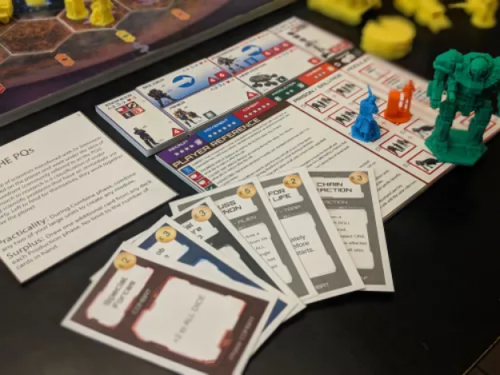
It was all a pretty tedious experiment but a lot easier than I thought it was going to be. The process of tinkering with your device to get things to print without failing proved to be the hardest part once you knew the process. That just took time and experience with the machine.
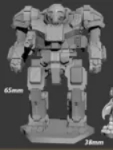 So, now that I had the equipment and a basic idea of what to do, I figured I could find some stuff to print as proxies just to see how things could look on the board.
So, now that I had the equipment and a basic idea of what to do, I figured I could find some stuff to print as proxies just to see how things could look on the board.
The mech was the easiest thing to find. I decided on an Atlas from Battletech/Mechwarrior from Thingiverse. It had a small footprint but still had a formidable size to it. I wanted to make sure the powermech looked imposing and this would do just fine until I could design and make my own. At the time, I had just moved to a harvester unit from a refinery structure. It was the first and only static structure in the game and it didn’t make it through that many iterations. I was a big fan of Command and Conquer so I had used the refinery from Red Alert prior to the harvester. When it came time to switch to the harvester, guess what I printed as a proxy for that? 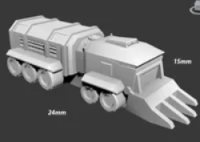 Of course, the harvester vehicle from C&C. This ended up being a terrible idea as it was long and narrow and took up a big chunk of the hex. However, it was all I had initially. Then I went looking for a soldier, a miner, and an engineer (both to play the game and to start a tech-minded Village People tribute band).
Of course, the harvester vehicle from C&C. This ended up being a terrible idea as it was long and narrow and took up a big chunk of the hex. However, it was all I had initially. Then I went looking for a soldier, a miner, and an engineer (both to play the game and to start a tech-minded Village People tribute band).
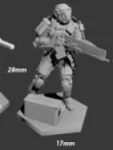 Strangely, I had a hard time finding a soldier unit that I liked… even as a proxy. Many of them looked cartoony, too sci-fi, too fantasy, or too medieval. I finally decided on a soldier model from Fallout 4. It looked pretty cool and had a decent amount of detail and footprint.
Strangely, I had a hard time finding a soldier unit that I liked… even as a proxy. Many of them looked cartoony, too sci-fi, too fantasy, or too medieval. I finally decided on a soldier model from Fallout 4. It looked pretty cool and had a decent amount of detail and footprint.
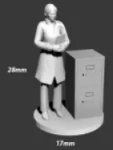 For my engineer, I decided on a model of a corporate businesswoman, then added a filing cabinet to help make it clear that she wasn’t down in the dirt with the other units. Thematically at the time, that unit was meant more to be working in the bridge of the terraformer than out on the field.
For my engineer, I decided on a model of a corporate businesswoman, then added a filing cabinet to help make it clear that she wasn’t down in the dirt with the other units. Thematically at the time, that unit was meant more to be working in the bridge of the terraformer than out on the field.
The miner ended up being the hardest to find as a proxy. Almost every miner character at the time was a fantasy unit or an actual modern-day cartoony construction worker. I found something tolerable and modified it the best I could in 3DS Max at the time and went with it. With that out of the way, it came time to print everything out, check sizes, and see what the whole shebang looked like on the table.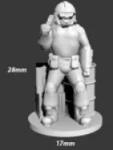
Even though everything was a proxy, I was ecstatic. It can be said that presentation is sometimes everything and the game finally felt more real, more of what I wanted the experience to be like. The game was finally starting to feel like an epic miniatures game that brought a big experience to the table. 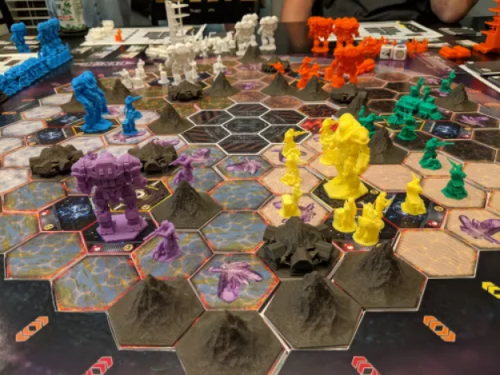 However, the crown jewel model was still missing. There was no colony ship proxy! The idea of a buildable colony ship miniature was just not something available out there. I was going to be forced to figure this one out on my own.
However, the crown jewel model was still missing. There was no colony ship proxy! The idea of a buildable colony ship miniature was just not something available out there. I was going to be forced to figure this one out on my own.
I had watched sci-fi most of my life and had a pretty good idea of what I wanted visually. I wanted to avoid leaning into tropes, but I also wanted some level of familiarity for the player. I had to make 5 modules that were going to be added to a structure throughout the game. I had my basic idea of the modules already, but now came the time to actually design the very basic idea in 3d and hopefully print them out. So, I decided to make some basic shapes and then just add some very minor details just to give it some life. I work at a robotics company for my day job and had a pretty good understanding of tolerances and ways for things to fit together. Of course, now I would be working in millimeters instead of much larger values… but the principle is the same. Partly due to having some prior experience, but also in major part due to luck, the very first design I came up with printed and fit together perfectly. It was actually one of those moments that makes you think you are on the right path and really inspires you to keep going!
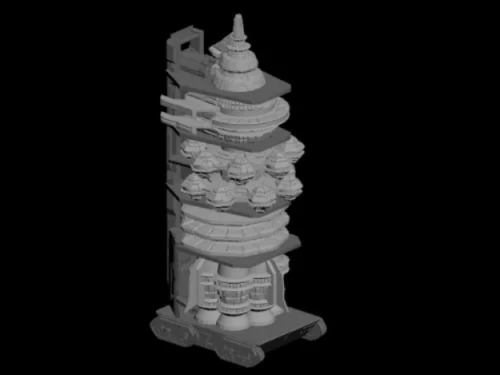 So, now I had my modular Colony Ship ready to go along with all of my other miniature proxies. This newest display of the game was a massive step forward in appearance, making the game feel real, and getting that tactile feel of actual components in your hand. But in spite of the presentation, the game was still evolving into something I wasn’t quite proud of yet. This is when I decided to continue bringing it to conventions to get more feedback from the community.
So, now I had my modular Colony Ship ready to go along with all of my other miniature proxies. This newest display of the game was a massive step forward in appearance, making the game feel real, and getting that tactile feel of actual components in your hand. But in spite of the presentation, the game was still evolving into something I wasn’t quite proud of yet. This is when I decided to continue bringing it to conventions to get more feedback from the community.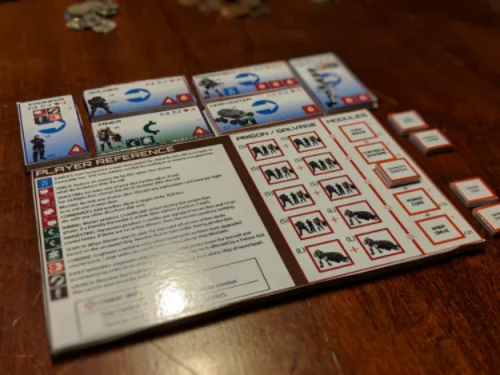
At the time, the gameplay was very procedural. It was the only thing that made sense to me. All of the players did a thing… then they all did another thing… so forth and so on. How in the world could you ever design a game where everyone had more freeform player agency? That was nearly impossible to my mind at the time, or certainly, something for experienced professional designers to figure out. So for now, I decided to just stick with this procedural grind. Besides, it was easy to explain, easy to teach, and also somewhat compartmentalized the mechanics so players weren’t overwhelmed at the start. That had to account for something right? So, on to conventions and feedback! If you’re following along from previous entries, let’s take stock of how the game works at this stage. All of the players start at a static 3-hex-sized base in the middle of each kind of terrain. The ship would be built at this location, but not join the gameboard until it was completed. At that point, it would then appear and start to move towards a center launchpad that all players were racing to get to first. The game is still played in 6 phases. 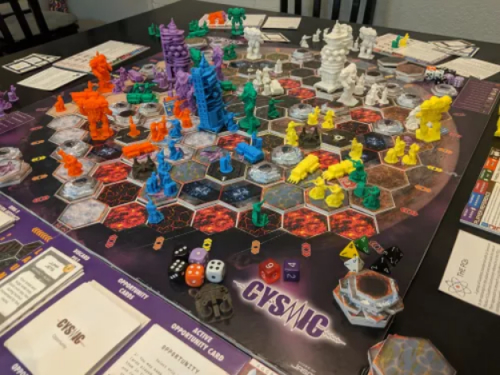
RECRUIT: All of the players recruit simultaneously into their static base. Units were limited to 3 per hex, a limitation implemented from the very first design. So each person could recruit up to a maximum of 9 units if all of their base hexes were empty. Otherwise, they could recruit up to their maximum hex occupancy minus units already there.
MOVEMENT: This was where the game came to life with a new design. Each player had flipboards for each of the 6 different types of units. Starting from the left was the portrait layout flipboard for the Engineer unit. Then the landscape layout flipboard for the soldier was stacked on top of the miner. After that, the next two landscape flipboards were the corresponding vehicles as upgrades to the two units to their left. The powermech was on top of the harvester. Lastly, the Colony Ship was the portrait layout flipboard that finished the layout. (5 of those units are still in the current design today!) The flipboards had two sides showing which units were ready to move and which were already exhausted, so players could easily keep track. The order in which people moved their units on the board was very important because it gave individuals the ability to respond to fights that had been started by combat units. A player could be very aggressive and move out immediately to try to lock down units. Otherwise, they could hold back and then try to join a fight to help protect their support units after the fact. I felt like this was very important to keep in the game and it still works in the latest iteration… although the mechanic is a bit different today.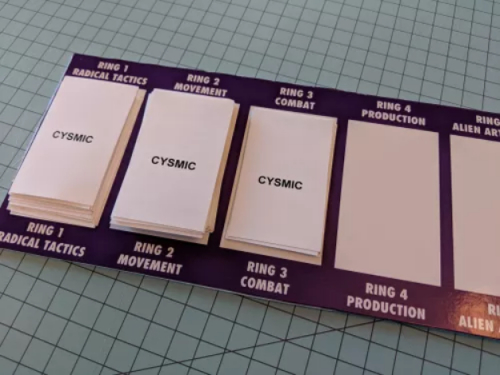
COMBAT: This is where all players resolved their combats. In some cases, players could simultaneously resolve fights depending on the participating players. There was always an attacker and a defender. The attacker fired first and resolved attrition immediately. Then, the defender would return fire if possible. This still holds true even now although originally there was another token involved that was clunky. I’ve since replaced it with a much more elegant solution. One of the other parts of the game at this point was that ONLY attackers could capture units in combat. Defenders never had the opportunity to capture units. This made “turtling” literally an impossibility to win. You had to attack to capture units at all in the game. However, this made the game last eons longer than it should have. I am still partial to this mechanic, but a good friend finally talked me into changing it and it was absolutely the best decision!
PRODUCTION: In turn order, each player would now be able to produce cards and money from their miners and harvesters. That is if they survived the combat rounds. Once again, I loved this design choice, but the game could come to a crawl depending on how badly people’s supply chains were hit during combat. Also, another fond memory of this stage was the discovery card system. There were 6 decks of cards corresponding to the 6 rings of the hexes from the inside to the outside of the planet board. Each ring corresponded to a particular kind of card you would receive for the production phase. This really gave a strategic element to where you moved your miners and harvesters during the movement round and also telegraphed what you might be trying to do next round. I still love this system, but it didn’t make any thematic sense and it also made separating cards at the end of the game kind of a pain. I later did away with this in lieu of a single Discovery Card deck that includes all kinds of multi-use cards. It’s a more elegant system and gives players more agency to respond to the ever-changing landscape of the game board.
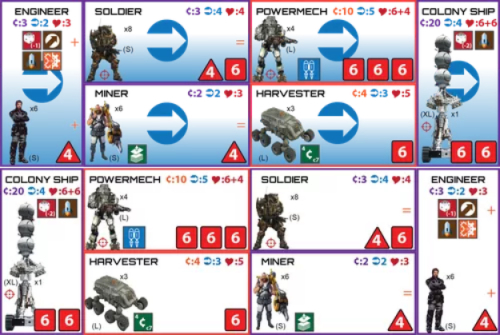 COMBINE: I was soooo tied to this concept from the earliest times and I held onto it for what seems like forever. The idea was the engineer units could “combine” on the same hex as a soldier to automatically spawn a powermech or with a miner to spawn a harvester. Once again, thematically this made no sense. Two humans combine together to make a vehicle out on the battlefield? Wondertwin powers, activate! It was a cool game mechanic and also made desirable targets of opportunity out on the board when a player saw an engineer and a miner together on a single hex. You knew what that player was going to do during the Combine phase so you had to go and attack them. I still love this idea, but I have since completely purged the game of the “combine” mechanic and changed it over to an upgrade system for the units to get vehicles. The second part of the combine mechanic was “combining” two enemy units to produce a module for your colony ship. Thematically, once again, this made about as much sense as two humans forming a vehicle. But this was a very cool idea that forced players to fight to progress the game. However, it still had the issue where players could keep beating up on one player or continue to do so over and over. It was a flaw, to say the least… one that a lot of other games still have in the market. I have since “solved” this issue with the latest design, in my opinion.
COMBINE: I was soooo tied to this concept from the earliest times and I held onto it for what seems like forever. The idea was the engineer units could “combine” on the same hex as a soldier to automatically spawn a powermech or with a miner to spawn a harvester. Once again, thematically this made no sense. Two humans combine together to make a vehicle out on the battlefield? Wondertwin powers, activate! It was a cool game mechanic and also made desirable targets of opportunity out on the board when a player saw an engineer and a miner together on a single hex. You knew what that player was going to do during the Combine phase so you had to go and attack them. I still love this idea, but I have since completely purged the game of the “combine” mechanic and changed it over to an upgrade system for the units to get vehicles. The second part of the combine mechanic was “combining” two enemy units to produce a module for your colony ship. Thematically, once again, this made about as much sense as two humans forming a vehicle. But this was a very cool idea that forced players to fight to progress the game. However, it still had the issue where players could keep beating up on one player or continue to do so over and over. It was a flaw, to say the least… one that a lot of other games still have in the market. I have since “solved” this issue with the latest design, in my opinion.
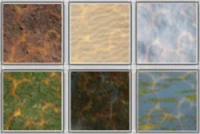 TREMOR: Lastly, the current first player would roll the tremor dice. That’s right, there were no fracture tokens in a bag yet. It was just a set of dice. You would roll the two dice and one was the terrain die and the other was the ring die. You have 6 terrains around the board and then 6 rings from the inside outward. Ring 6 was the launchpad that couldn’t be destroyed but could still destroy your ship as you tried to launch. This was a very convenient grid perfect for 2 six-sided dice to determine what part of the planet was going to be destroyed.
TREMOR: Lastly, the current first player would roll the tremor dice. That’s right, there were no fracture tokens in a bag yet. It was just a set of dice. You would roll the two dice and one was the terrain die and the other was the ring die. You have 6 terrains around the board and then 6 rings from the inside outward. Ring 6 was the launchpad that couldn’t be destroyed but could still destroy your ship as you tried to launch. This was a very convenient grid perfect for 2 six-sided dice to determine what part of the planet was going to be destroyed. 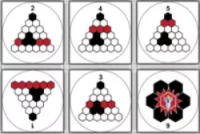 The reason this was a flawed approach was that as the game progressed, the likelihood of rolling dice combinations that were already rolled before became more and more probable. Players were always disappointed when “nothing happened” because that area had already collapsed. Later, I moved to the current version where no matter what, something is going to happen during a fracture event.
The reason this was a flawed approach was that as the game progressed, the likelihood of rolling dice combinations that were already rolled before became more and more probable. Players were always disappointed when “nothing happened” because that area had already collapsed. Later, I moved to the current version where no matter what, something is going to happen during a fracture event.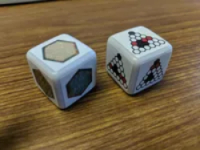
So, while I still remember this version of the game quite fondly, I also grew to understand the flaws it held and decided that I could do better. It really is a shame because this version of the game could have been a hit even in spite of its flaws. I seriously could have stopped there. Almost everyone that played this version of the game was thinking it was done and ready for market.
Everyone… but me. I knew I could do better. I had to start thinking about how I could make it more sensibly thematic and design out the glaring flaws. But at this stage, it was so cool to see so many people loving the current version regardless.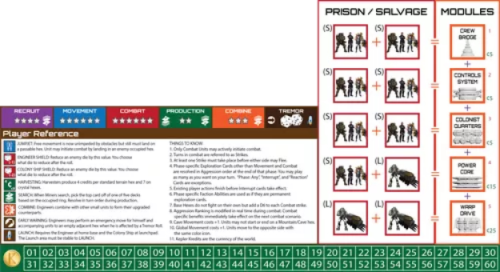
In my next entry, I will be talking about the massive gameplay changes made to solve the aforementioned flaws, the addition of factions with unique abilities, and also, my first foray into hiring artists and modelers to help me get the game closer to a producible version that could really stand out in the industry. Please continue to follow along with me as I get closer to explaining the version of the game that I would like to present to you in 2023. Until next time, thanks again for reading.
Jason Blake
Star Reach Games
CYSMIC
